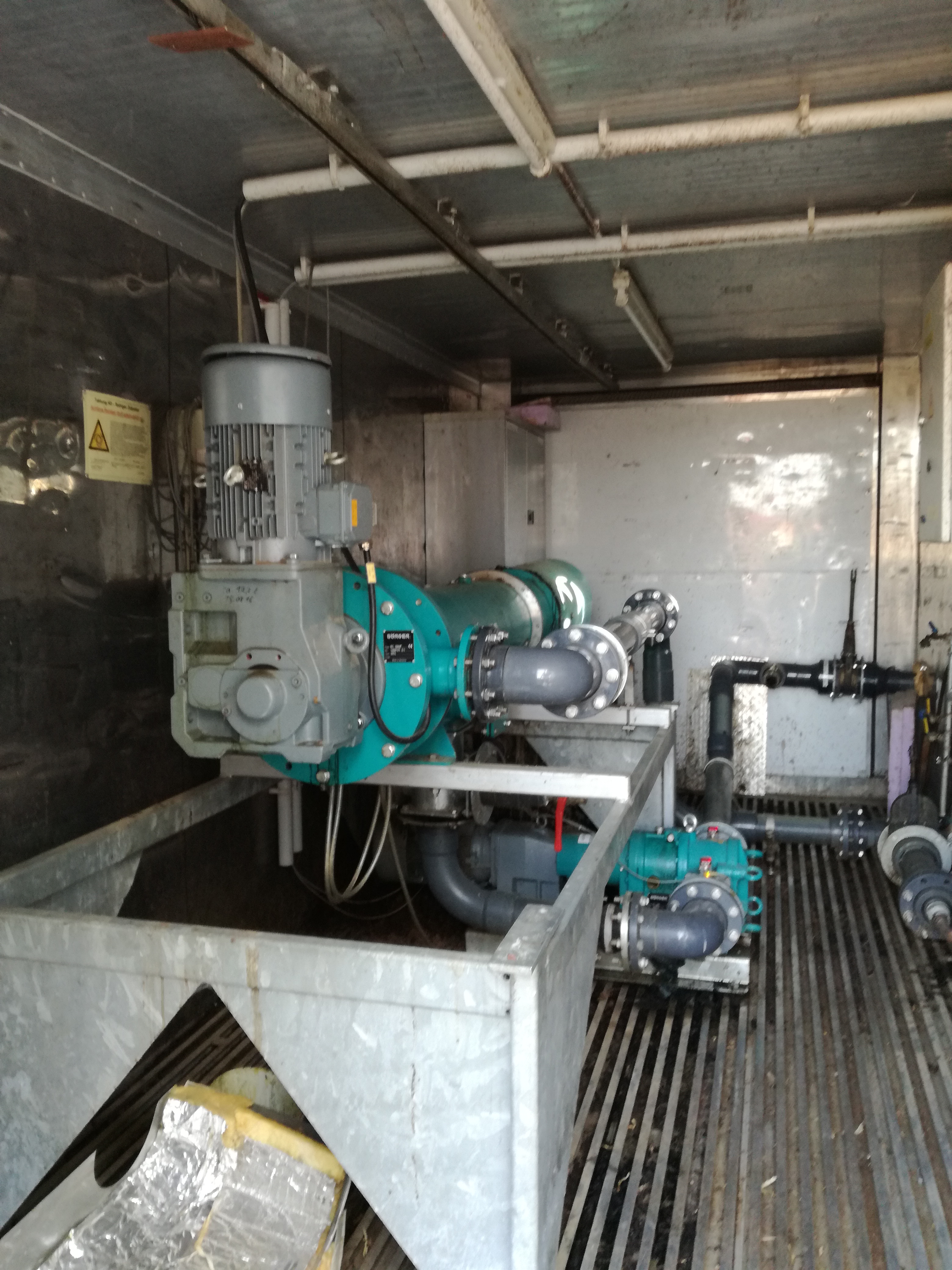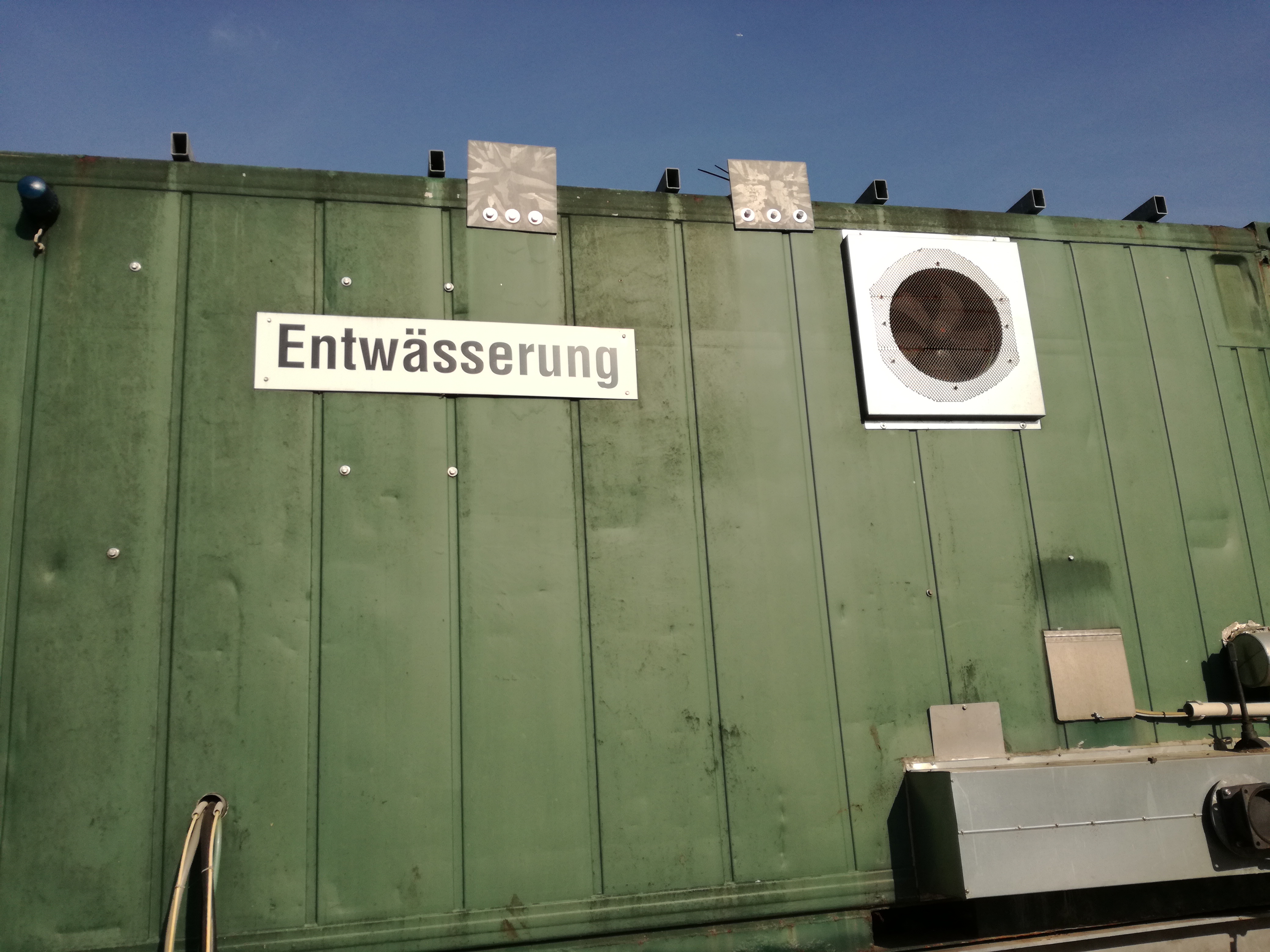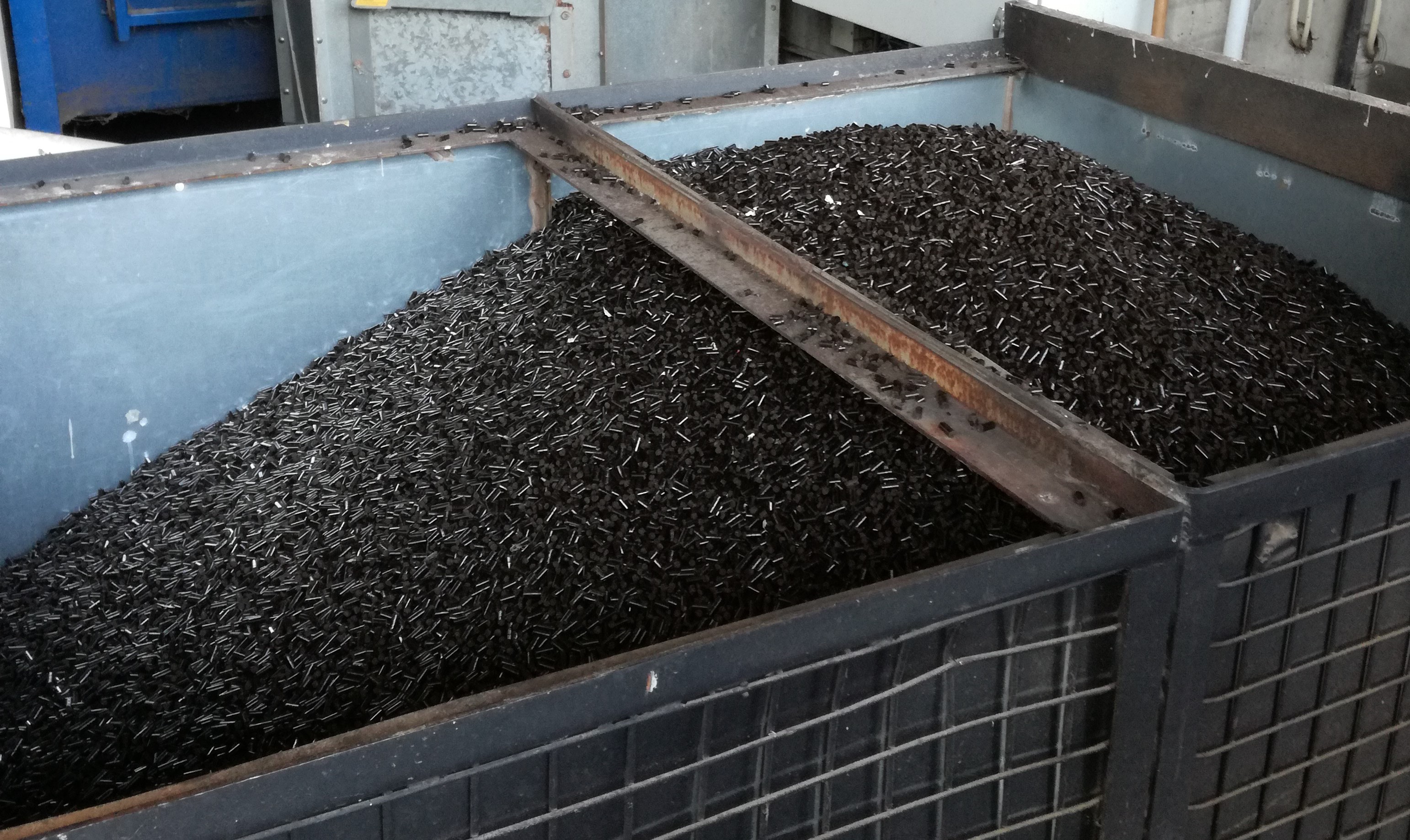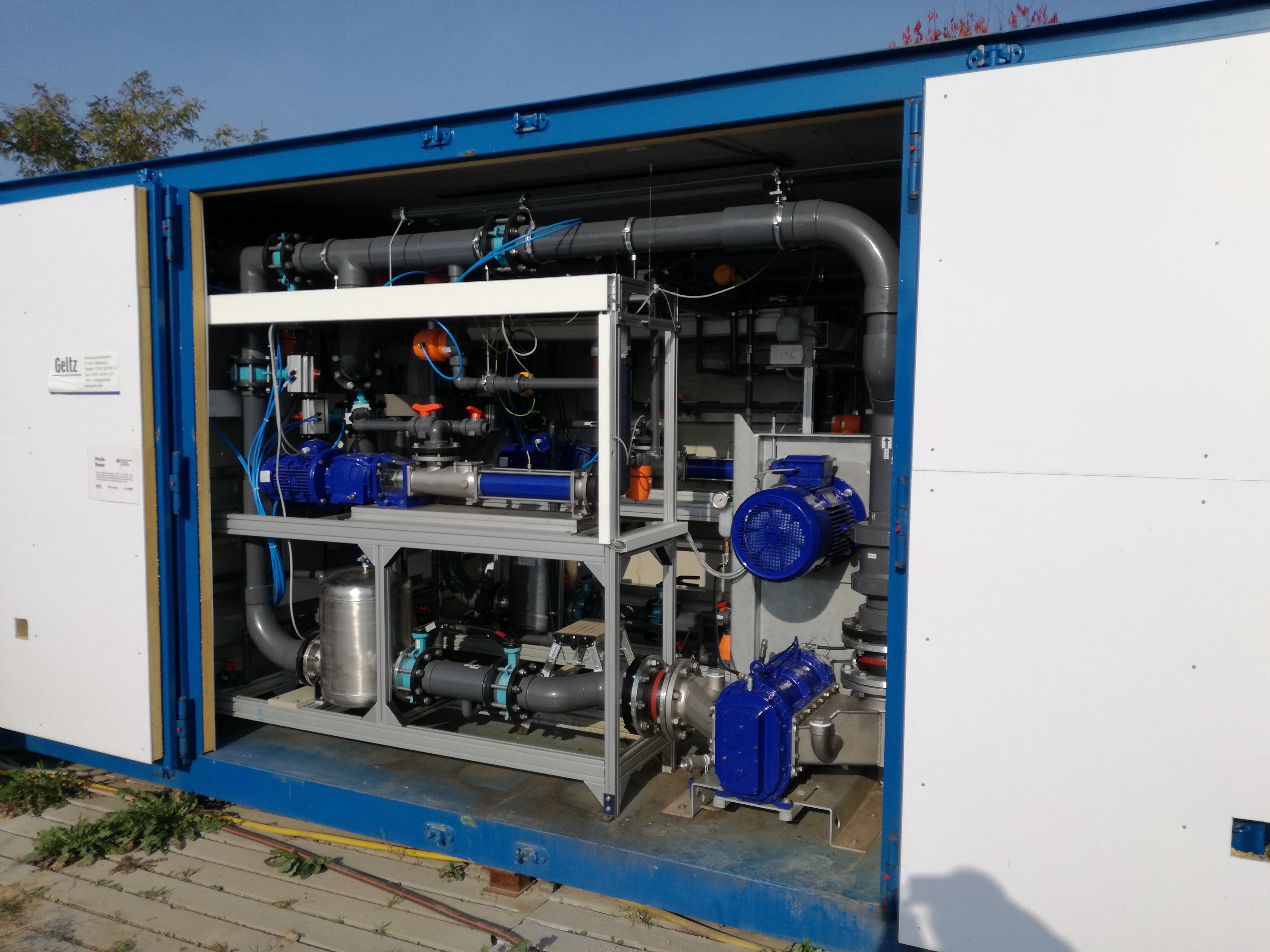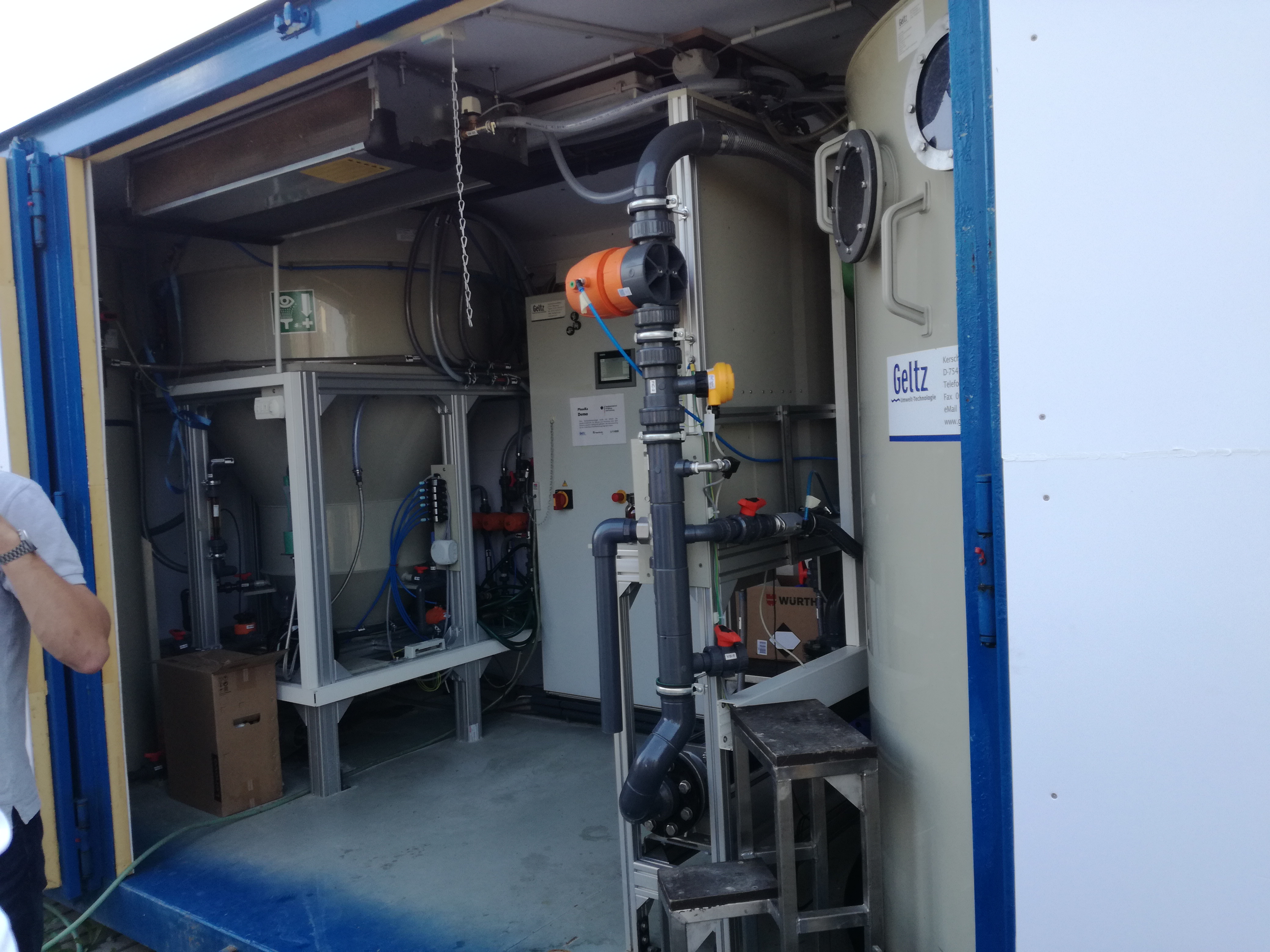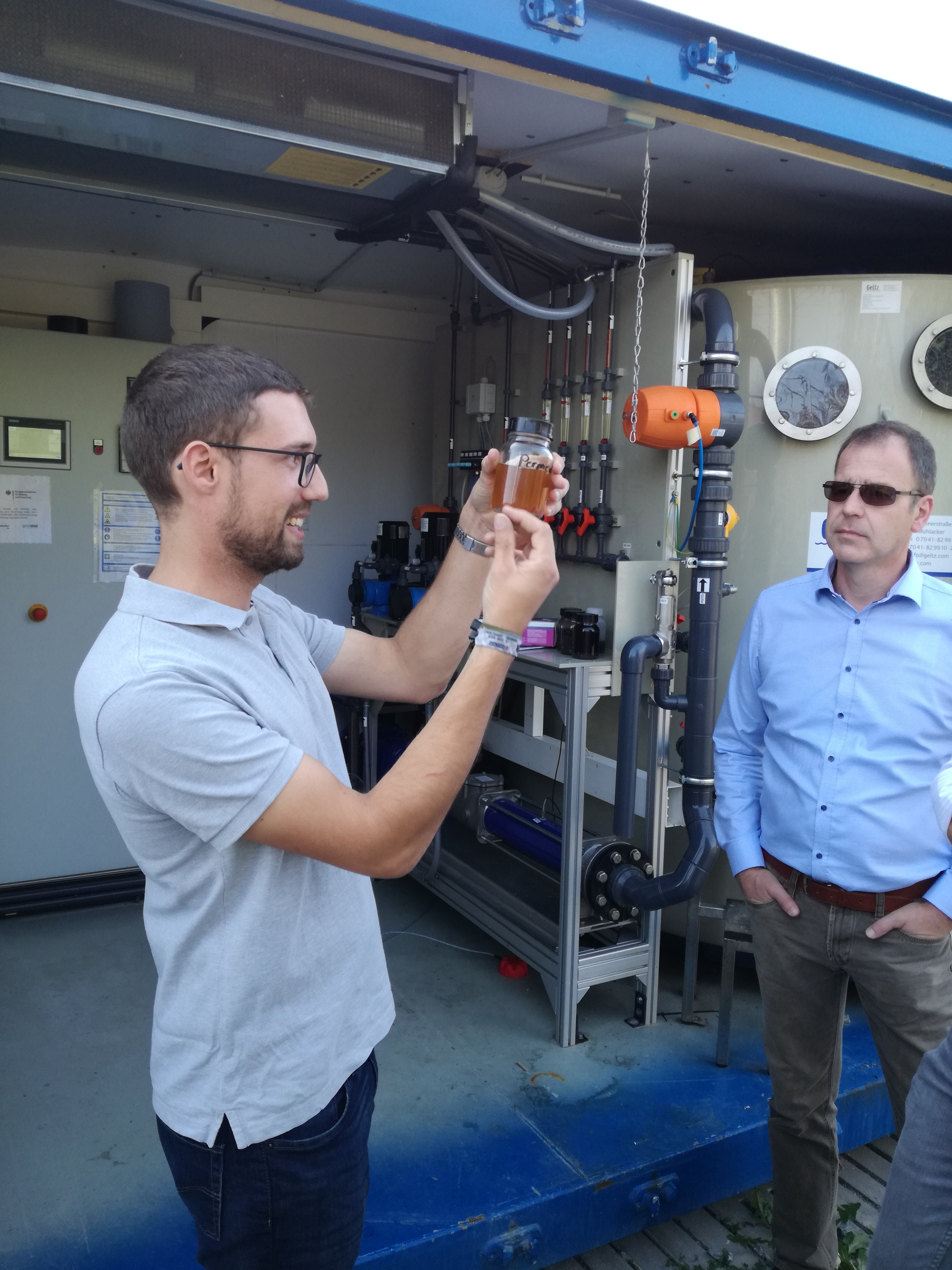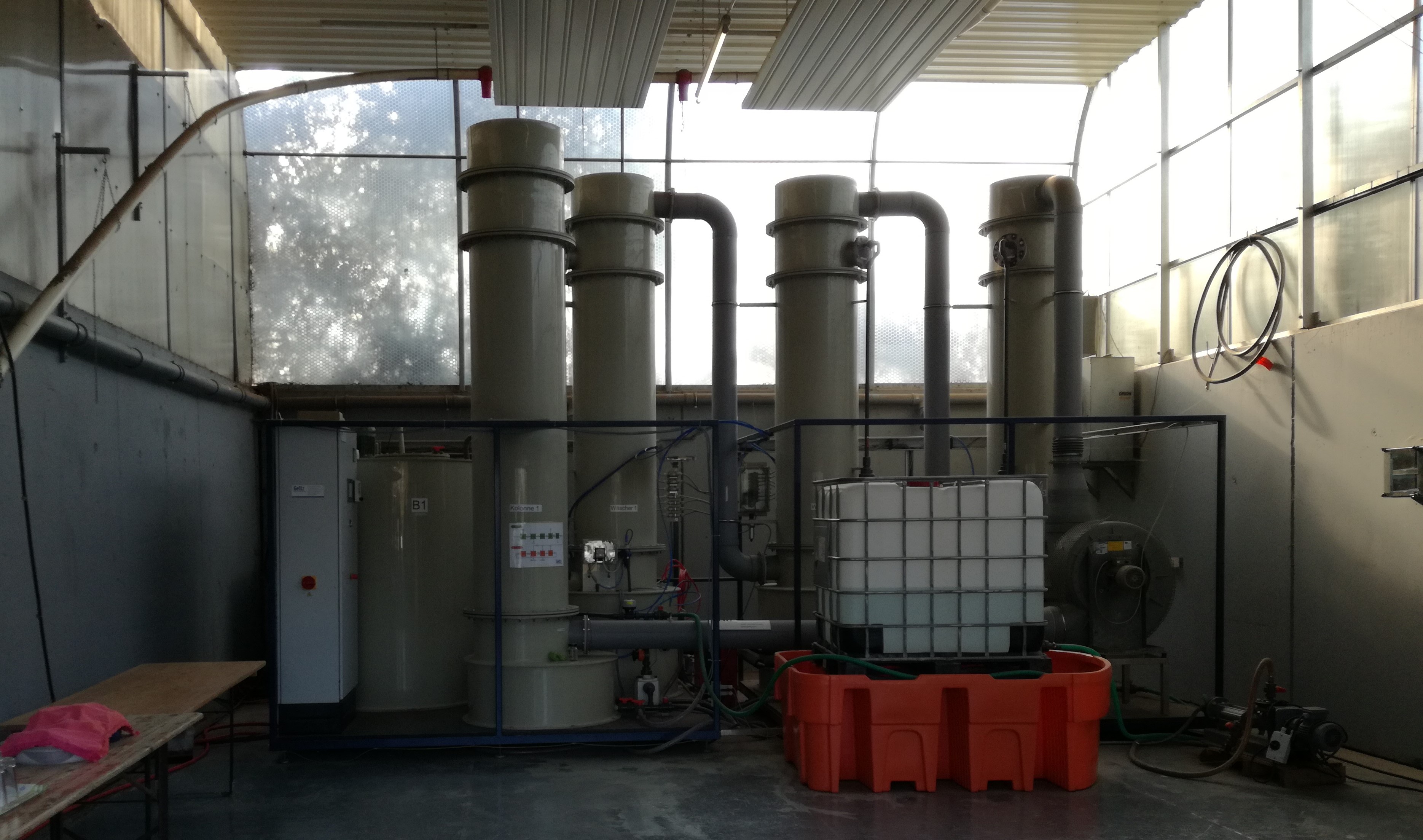SYSTEMIC visits Agro Energy Hohenlohe GmbH
Agro Energy Hohenlohe in Kupferzell, Germany is a biogas plant owned by Thomas Karle.
In 2001 Thomas Karle started operating his first biogas plant. The biogas plant was constructed with quite simple technology and had a digester volume of 600m³ and a co-generation unit of 55 kWel. Which was below average at the time (190 kWel).
Mr Karle’s motivation to start producing biogas was to increase the value of this farm by utilizing the liquid manure from his fattening pigs, leaves of sugar beets and organic residues from his farm. Since the first installation, the biogas plant has been modified and optimized continuously. Mr Karle took the first step in 2003 when he increased the size of this biogas plant and installed a bigger CHP unit with approx. 300kW el.
Operation of the new plant started in 2004. To produce the necessary amount of gas Mr Karle increased the amount of digested energy crops and also added left over from fruit and vegetable processing.
Since then the plant digests rye total grain silage, corn silage, fattening pig manure and cattle manure (7%), mash, leftover from fruit and vegetable processing (DM 15-20%) and must from wine making.
The input consists out of 1/3 energy crops, 1/3 vegetable residues and 1/3 animal slurry and manure, but the proportions vary depending on the season.
A seasonal feedstock are sweet corn residues (70% leaves and 30% cob) that are fed into the digester from August till October.
The plant has a reception and mixing pit for slurry (100 m³) and a new feeding system to mix the solids with the liquids. This uses 120kWel and runs half an hour every 2 hours. A grinder grinds the solid feedstocks (90kW).
Each 2 hours 4 tons of solid material is mixed with 3,5ton of liquids and fed to the thermophilic digesters. The hydraulic retention time is 21 days.
The digestate is separated by means of a screw press without polymers, in a container. The air from the container is not washed but a ventilator drives it outside the container. The solid fraction from the screw press has a dry matter content of 70%.
In 2007, the biogas plant was upgraded by installing a micro gas turbine in cooperation with Greenvironment gmbh.
The rest of the heat is used to heat up the digesters and drying grain. In addition to this, a greenhouse type system was constructed for drying the solid fraction of the digestate.
Greenhouse and micro-gas turbine had the synergy effect that exhaust gas from the gas turbine served as hot air for drying.
The thermos solar system resembles a green house, which uses the exhaust gas of the gas turbine and warmth of the sun to dry the solid fraction which is spread to dry in 6 weeks.
The exhaust air from the green house is not scrubbed because emission measurements showed it to have a low ammonia levels due to the nitrogen being bound organically to the solid matter.
A part of the liquid fraction of the digestate is sprayed on top of the drying solid fraction to obtain the perfect consistency for pelletizing. While the solid fraction dries, a machine, called the electrical pig ® moves over the solid fraction to mix it and turn it until it has reached a dry matter content of 80-90%.
This is fed to a pelletizing machine and yearly 100-120 tons of pellets are produced per year and sold to garden centers and in bulk as a fertilizer for viticulture.
The pellets as such are not the best product to market and Agro Energy Hohenlohe sees potential in creating specialized fertilizer pellets, by adding recovered N and P (see later) in the ratio’s demanded by the costumers.
To maximize the heat from the CHP Mr Karle has built a district heating grid in 2009 to supply the village of Füssbach with renewable heat.
When the district heating started operation in winter 2009-2010, Füssbach was awarded to be the first “bioenergy village” in the district.
In 2012 the micro gas turbines were taken out of operation because of technical issues with the gas cleaning. Instead a second CHP unit was installed.
Since 2013 the CHPs are operated flexibly, which means that they produce electricity during when electricity is expensive and don’t run during the night, if the prices are low. Yet, the biogas plant has not reached its final configuration.
Mr Karle often cooperates with universities and research organizations. He collaborated with the Fraunhofer IGB institute in a project (BioEco SIM) that aimed to find new and feasible ways for farms to produce a diverse range of fertilizers from digestate.
Today a demonstration unit of the concept is still present on site, and it is designed and further developed by Geltz.
The concept of nutrient recovery from digestate and manure by Geltz and Frauenhofer IGB is the following:
- -Acidification to transfer organically bound phosphorus to the liquid phase
- -Separation of solid and liquid fraction
- -Precipitation of phosphorus Salts
- -N-stripping scrubbing of the P-pour liquid
The demo unit fits in 1 container and can treat 1 m³ of liquid fraction of digestate per hour.
The scale of this demo is too low to be profitable (>30€ treatment cost/m³) and therefore Geltz will start building a bigger pilot installation on site that would be able to treat 10m³ of raw digestate/hour at a cost of 12-13EUR/m³ (investment depreciation 5 years + operational cost).
The pilot installation should be finished in February 2019. After that a period of further testing a finetuning will be needed before this farm-scale installation will be available on the market.
The manure or digestate is acidified to a pH of 5-5,6 which will cause the organically bound phosphorus to transfer to the liquid phase. The low pH will also limit the ammonia emission.
The acidified digestate or manure is then separated in different steps:
- 1. by means of a screw press
- 2. coarse separation by means of a vacuum separator. This looks like a screw that evacuates the liquid fraction. The solid fraction has a dry matter content of 15-20% and can be used as a soil conditioner since it contains almost no P or N.
- 3. the liquid fraction undergoes a microfiltration (mesh of 2µm). This restrains the bacteria and fine organic particles, and the concentrate is recycled back to the first step. Sulphates, ammonium and dissolved phosphorus and other salts go through the filter to the permeate.
A pressure of 3 bar is used on the microfiltration membranes and the filters need to be cooled for optimal treatment. The membranes are cleaned with air each 5 hours and twice a week with water.
In the next step, alkali is added to the permeate to raise the pH. Different kinds of alkali can be used for this f.e. Ca(OH)2 or NaOH. The amount that needs to be added depends on the buffer capacity of the permeate.
The elevated pH will stimulate the precipitation of phosphorus salts like NH4MgPO4·6H2O, KMgPO4·6H2O and Ca(H2PO4)2.
When the farm scale pilot is built, a chamber filter press will separate the liquid from the phosphorus salts, which have a dry matter content of 50% and a P2O5 concentration of 10%.
The farm scale pilot installation is estimated to be able to produce 30 kg of phosphorus salts per m³ of raw digestate, when treating 80 m³ of digestate per day (in 8 hours).
The amount of organic (P-free solid) fraction coming from is estimated to be around 200 kg/tonne digestate.
The P-free liquid still contains ammonium and this is converted into ammonia by elevating the temperature to 60°C by using recovered heat from the CHP. To make sure that all ammonium is present under the form of ammonia, extra alkali can be added too.
The solution is trickled through a carrier material from the top down of a stripping column.
A counterflow of air captures the ammonia in the gas phase.
In the next step, the ammonia is scrubbed from the ammonia-rich air by means of an acid solution (40% H2SO4, 20kg/m³). Because after a first scrubbing step, the pH is reduced to 7, a second scrubber is needed to scrub the remaining ammonia from the air.
An ammonium sulphate solution (12% N) is recovered. In Germany, this product has the status of mineral fertilizer and it can be used above 170 kg N/ha.year.


